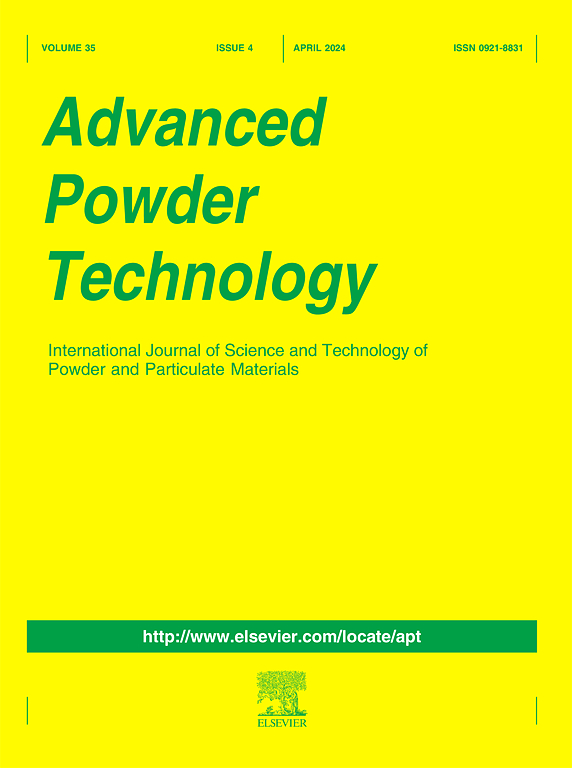Mechanochemical synthesis of telmisartan-based co-amorphous solid dispersions with enhanced solubility and unexpected cytotoxic synergy on normal cell lines
IF 4.2
2区 工程技术
Q2 ENGINEERING, CHEMICAL
引用次数: 0
Abstract
Telmisartan (TEL), an angiotensin II receptor blocker (ARB), has poor bioavailability due to its low solubility. To improve dissolution profile and potential therapeutic efficacy of this drug, six TEL-based co-amorphous solid dispersions (SDs) were synthesized using mechanochemical neat grinding with various active pharmaceutical ingredients (APIs): hydrochlorothiazide (HCT), amlodipine (AMLO), amlodipine besylate (AMLO-Bes), and rosuvastatin sodium (ROS-Na). The resulting binary and ternary SDs were characterized using X-ray powder diffraction (XRPD), Fourier-transform infrared spectroscopy (FT-IR), and differential scanning calorimetry (DSC). Stability tests confirmed that most SDs were stable for at least 12 months, except for the TEL/HCT system, which recrystallized after two months. Dissolution studies revealed 4–5 fold improvement in TEL release from co-amorphous SDs, especially in formulations with excipients. Cytotoxic activity was evaluated against cancerous (HepG2, MCF-7, HL-60) and normal (HUVEC and MCF-10A) cell lines. The studies revealed a clear synergistic cytotoxic effect of the TEL and ROS-Na combination, which is even more marked on normal cells.

以替米沙坦为基础的非晶固体分散体的机械化学合成,具有增强的溶解度和对正常细胞系意想不到的细胞毒性协同作用
替米沙坦(TEL)是一种血管紧张素II受体阻滞剂(ARB),由于其溶解度低,生物利用度较差。为了提高该药物的溶出度和潜在的治疗效果,以氢氯噻嗪(HCT)、氨氯地平(AMLO)、氨氯地平磺酸酯(AMLO- bes)和瑞舒伐他汀钠(ROS-Na)等多种有效药物成分为原料,采用机械化学纯研磨法制备了6种苯甲酸乙酯基共非晶固体分散体(SDs)。采用x射线粉末衍射(XRPD)、傅里叶变换红外光谱(FT-IR)和差示扫描量热法(DSC)对二元和三元SDs进行了表征。稳定性测试证实,除了TEL/HCT体系在两个月后再结晶外,大多数SDs至少在12个月内都是稳定的。溶出度研究表明,共无定形SDs的TEL释放量提高了4-5倍,特别是在含有赋形剂的配方中。对癌变细胞系(HepG2、MCF-7、HL-60)和正常细胞系(HUVEC和MCF-10A)进行细胞毒活性评估。研究表明,TEL和ROS-Na组合具有明显的协同细胞毒作用,在正常细胞中更为明显。
本文章由计算机程序翻译,如有差异,请以英文原文为准。
求助全文
约1分钟内获得全文
求助全文
来源期刊

Advanced Powder Technology
工程技术-工程:化工
CiteScore
9.50
自引率
7.70%
发文量
424
审稿时长
55 days
期刊介绍:
The aim of Advanced Powder Technology is to meet the demand for an international journal that integrates all aspects of science and technology research on powder and particulate materials. The journal fulfills this purpose by publishing original research papers, rapid communications, reviews, and translated articles by prominent researchers worldwide.
The editorial work of Advanced Powder Technology, which was founded as the International Journal of the Society of Powder Technology, Japan, is now shared by distinguished board members, who operate in a unique framework designed to respond to the increasing global demand for articles on not only powder and particles, but also on various materials produced from them.
Advanced Powder Technology covers various areas, but a discussion of powder and particles is required in articles. Topics include: Production of powder and particulate materials in gases and liquids(nanoparticles, fine ceramics, pharmaceuticals, novel functional materials, etc.); Aerosol and colloidal processing; Powder and particle characterization; Dynamics and phenomena; Calculation and simulation (CFD, DEM, Monte Carlo method, population balance, etc.); Measurement and control of powder processes; Particle modification; Comminution; Powder handling and operations (storage, transport, granulation, separation, fluidization, etc.)
 求助内容:
求助内容: 应助结果提醒方式:
应助结果提醒方式:


